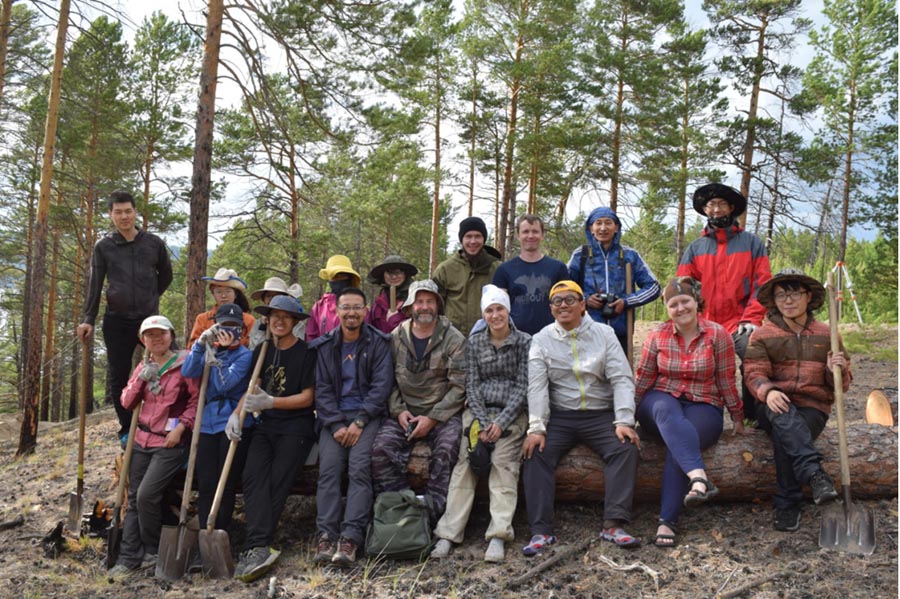 |
|
A Chinese archaeological team from Jilin University cooperates with Russian experts researching Pinchuka-6, a graveyard site deep in the Siberian forest. [Photo provided to China Daily] |
Going further north, a team of Chinese archaeologists from the Changchun-based Jilin University worked with their Russian counterparts at Pinchuka-6, a large-scale grave site dating back to between the 4th and 6th centuries that was discovered deep in the Siberian forest.
The Chinese team leader Quan Qiankun says the burial rituals and unearthed bronzeware pieces at the site share similarities with ancient nomadic ethnic groups in northern China.
"It indicates that even people living in the north of Siberia had a connection with North China at that time," Quan says. "A lot of focus is placed on the study of ancient ethnic groups to the north of Chinese border, but a clear picture of what life was like in Siberia remains a mystery to most Chinese archaeologists. It is essential for us to have this program and explore the sphere of influence of East Asian cultures."
"Today's international steps by Chinese archaeologists would have been unimaginable even five years ago," says Bai Yunxiang, a senior researcher from the Institute of Archaeology, CASS. "Frankly speaking, Chinese archaeologists' understanding of foreign sites is still insufficient. More projects will help us join the dots and eventually build a systematic map of knowledge about the culture of other countries."
He also expects Chinese archaeologists to have a growing influence in global academia.
"Archaeologists' broader world view shows their open mind and cultural inclusiveness," says Song Xinchao, deputy director of the National Cultural Heritage Administration. "They'll also help people to better understand today's global issues from a historical perspective."